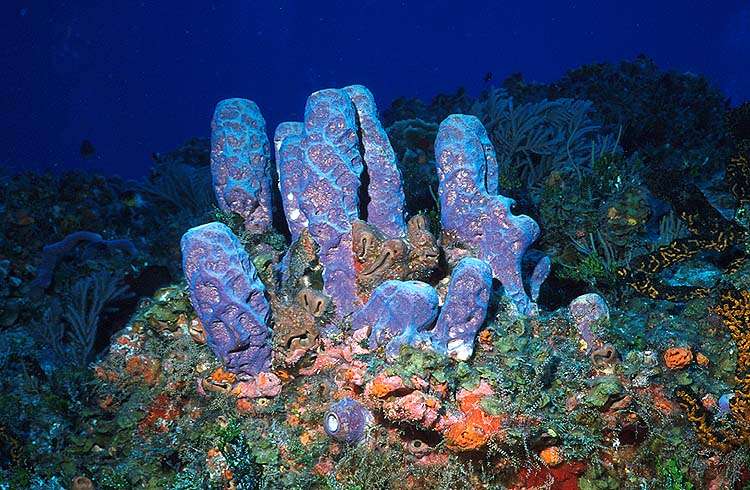
Common Name: Purple Tube Sponge
Scientific Name: Aplysina lacunosa
Kingdom:Animalia
Phylum: Porifera
Class:Demospongiae
Order:Dictyoceratida
Family: Spongiidae
Genus: Aplysina lacunosa
Looks/Characteristics: Covered in wart-like bumps. Can be purple, blue, gray, and gray-green. They are tubular and mainly live in clusters.
Live: They are mainly found near the Bahamas, Jamaca, the Caribbean, and lots of other tropical regions.
Habitat: They reside in relatively shallow areas, about 40-80ft below the surface protruding from the wall face.
Diet:Sponges in general are very efficient filter feeders. Most sponges eat tiny, floating organic particles and plankton that they filter from the water that flows through their body. The food is collected by specialized cells called choanocytes and brought forth by amoebocytes.
Size/Weight: Can be from 3 to 5ft, and in large clusters can be 6ft across.
Reproductive Cycle: Hermaphrodite, where each adult can act as either a male or female in reproduction.Although the sponge can be both roles they can only produce one gamete. The sperm is released into the water and somehow finds its way to the female sponges, where fertilization occurs internally. Eventually , the planktonic larvae are released from the female sponge and they float around in the water column as plankton for a few days. They then settle down and start growing.
Breeding/Mating Season: Unknown
Offspring: One offspring at a time.
Parental Involvement:None after the release of the larvae.
How they protect themselves: n/a
Interesting Facts:
- Look like plants but auctually the most simple animal.
- Most sponges are hermaphroditic, meaning that they can switch sexes
- Permanently attached to their location in the water
Back